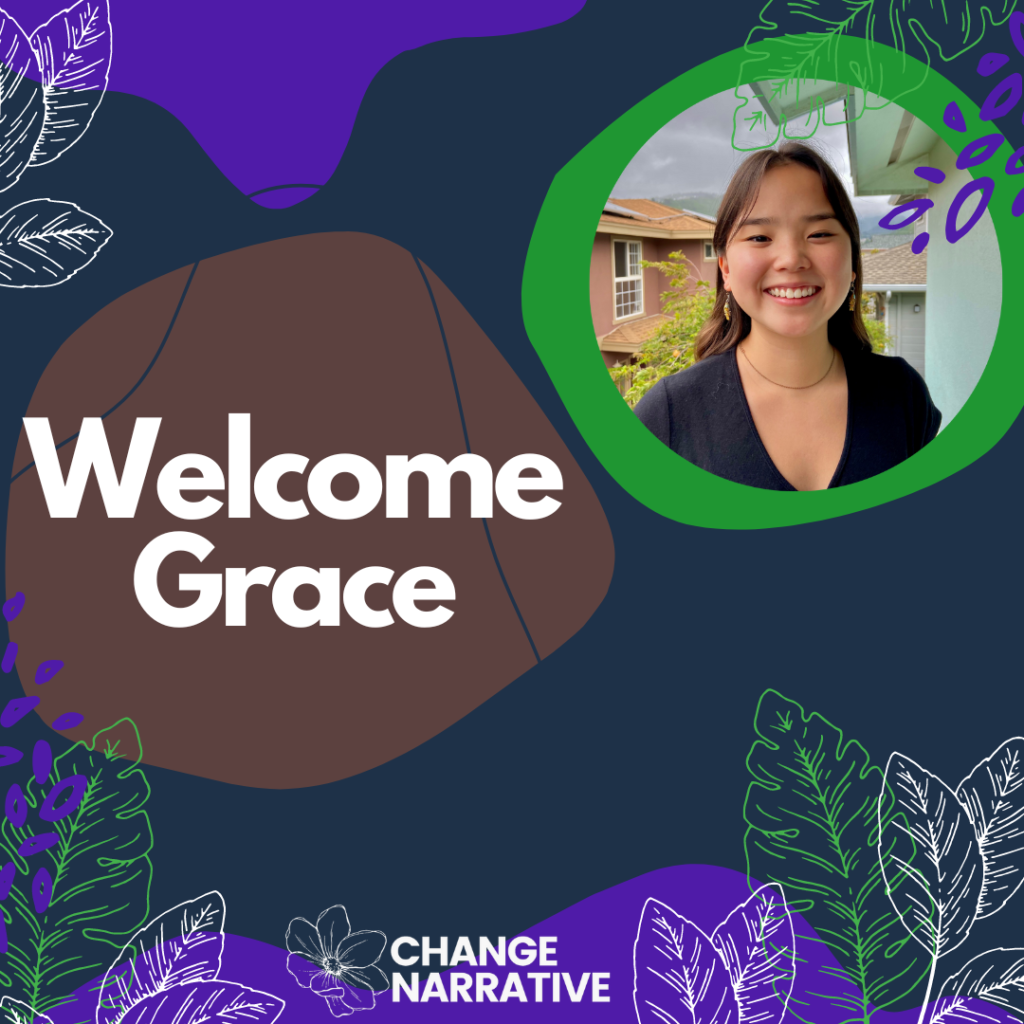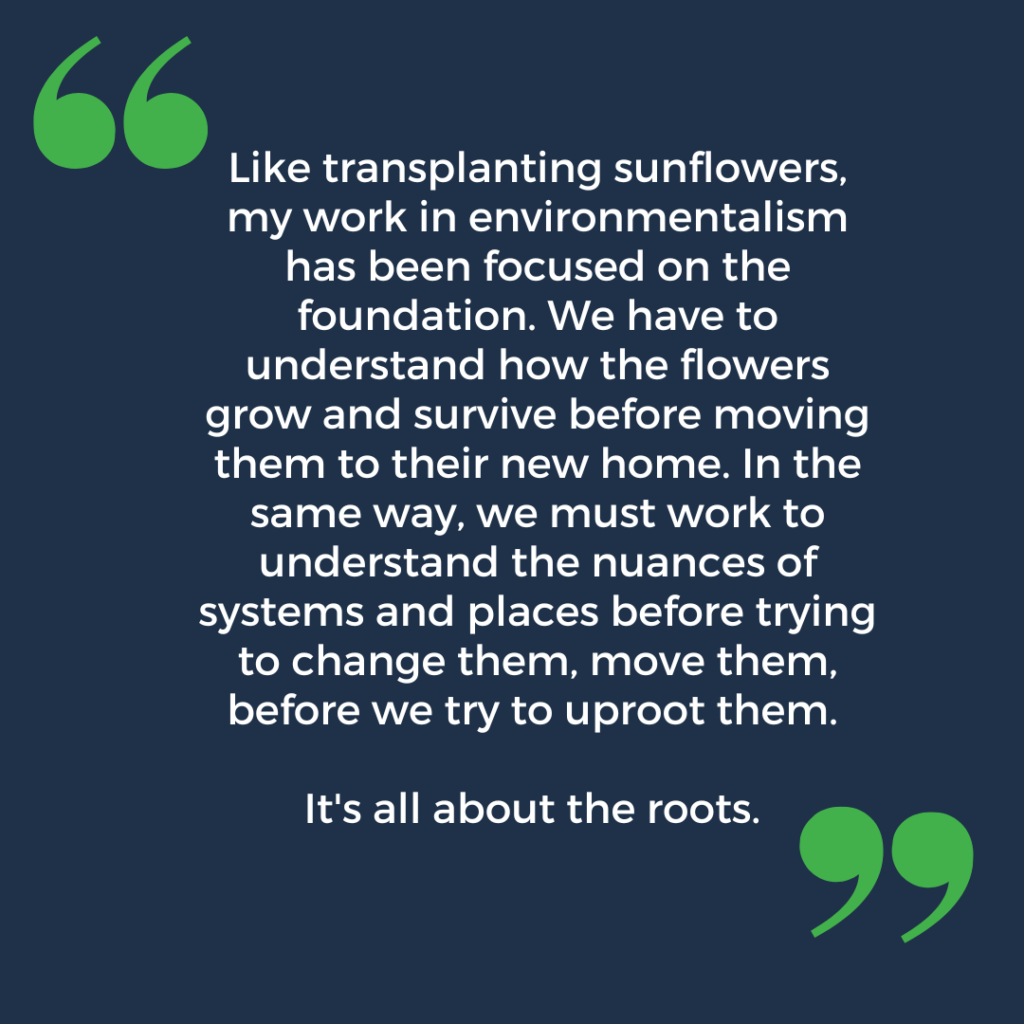
Grace invites the following reflection prompt while also sharing parts of her journey and what motivates her in this work…
~~~
What’s Your Favorite Memory From the Summer?
~~~
Mine is planting sunflowers 🌻
It was mid-July, 2021, and we were in the process of clearing overgrown weeds off walkways at the Danny Woo Community Garden in Seattle, Washington…. For the primarily immigrant elders in the Chinatown/International District that the garden serves, it’s important that the pathways are safe.
It took five of us to clear all the weeds that had claimed the area. By the time we were done breaking up and turning over the soil we were sweaty and covered in mud. With everything cleared, we thought it would be beautiful to transplant sunflowers around the base of the statue.
Anyone who knows about transplanting flowers knows it’s all about the roots. You have to keep them away from the sun and the dry air. I was once told that skillful transplanting ensures the roots never even know they left the ground.
I can’t say that we were that successful, but we worked quickly, trying to preserve as much of the root system as possible. One person supported the flower’s stalk while another gently lifted the plant from its old home to its new one.
When the sunflowers began to wilt, we worried the transplant was too stressful for them. We worried they wouldn’t make it. All we could do was wait.
The next week we were all happy to see that the sunflowers had straightened up. They stared defiantly back at the sun.
~~~
This is one of my favorite stories because it represents so much of what I have learned in community conservation work. While I tended to and nurtured the garden, it did so in return for me. The garden was my teacher.
~~
As an environmentalist, I learned that I, too go through cycles of wilting and growth. I used to aspire to be involved in public policy, to create laws and regulations that would force companies to make more sustainable decisions. I wanted to engage in top-down reform.
Working in the garden, however, was working from the bottom-up. I think that’s why they call it “grassroots movements.” it’s all about the roots.
My love for community engagement and service re-bloomed through our work. No longer was that part of me left to wilt.
Maybe planting sunflowers isn’t what people picture when thinking about conservation. But by removing weeds and planting flowers, the elders had an easier time navigating the garden and visited more. The more elders that visited, the more the garden thrived with the diversity of people and plants.
I followed the root up further.
Many immigrant elders experience isolation, which was only worsened by the pandemic. Making the garden safer and more accessible gave them a place to gather and join in community.
The more the elders gardened, the more food there was to go around. When the elders grow extra, they share it with others. It’s a form of reciprocity and mutual aid that nurtures the community.
So, the farther up I followed the root, the more I saw how our work spilled up in meaningful and impactful ways.
Like transplanting sunflowers, my work in environmentalism has been focused on the foundation. We have to understand how the flowers grow and survive before moving them to their new home. In the same way, we must work to understand the nuances of systems and places before trying to change them, move them, before we try to uproot them.
It’s all about the roots.
~~
I am excited to begin interning with Change Narrative, an organization that truly understands that it is all about the roots. Our roots in community, our environment, they connect us to one another. Storytelling expands our networks, giving everyone a voice to help build and nurture communities of care. We fortify each other, constructing a holistic and impactful movement against the climate crisis. I am so excited to get started!

